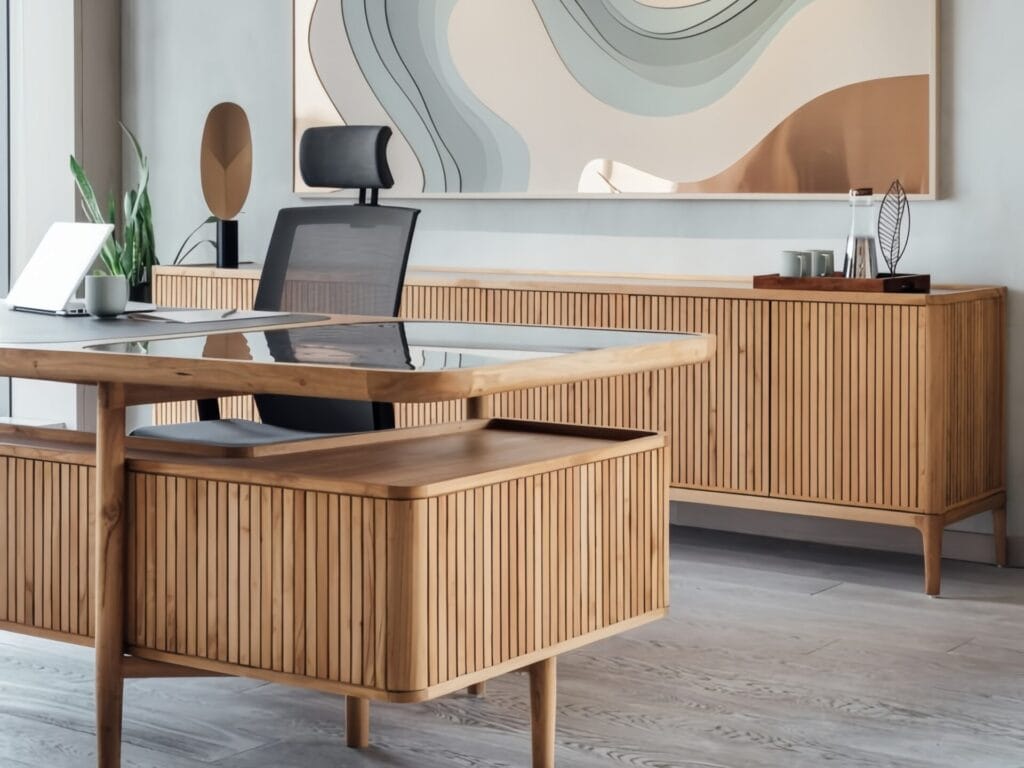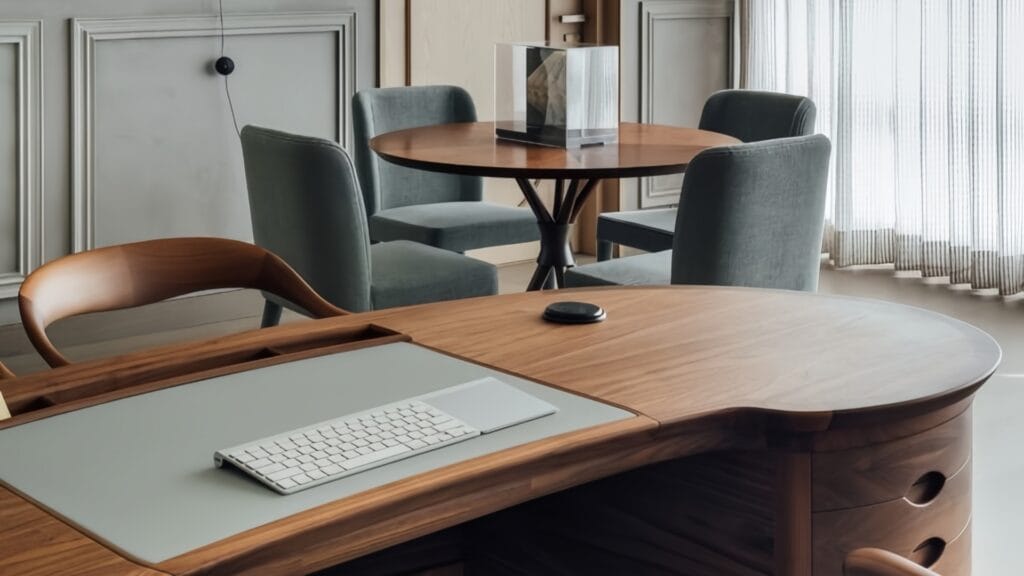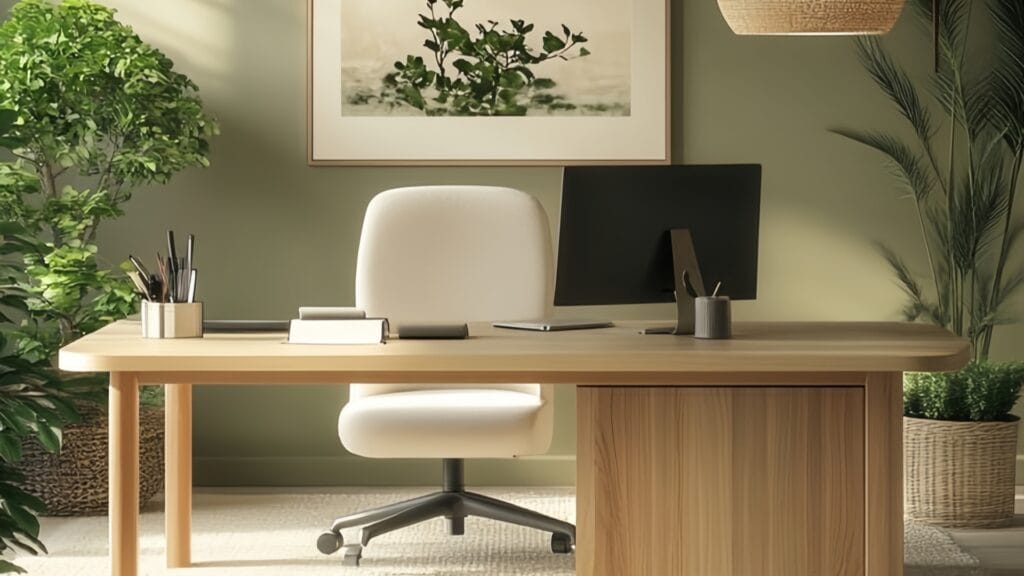In the modern business landscape, where environmental consciousness is increasingly becoming a priority, companies are recognizing the significance of adopting sustainable practices across all aspects of their operations. One such area that has gained considerable attention is the use of eco-friendly commercial furniture. This shift towards environmentally responsible furniture choices is not merely a response to global environmental challenges but is also driven by the profound impact it can have on employee well-being and productivity. This article delves into the multifaceted benefits of eco-friendly commercial furniture, supported by research and real-world case studies, to highlight its importance in creating a thriving workplace.

The Health Benefits of Eco-Friendly Commercial Furniture
Improved Indoor Air Quality
Traditional commercial furniture, often manufactured using synthetic materials and adhesives, can emit volatile organic compounds (VOCs) into the air. These VOCs, which include formaldehyde and benzene, are known to have detrimental effects on human health. Prolonged exposure to such compounds can lead to a range of health issues, including headaches, dizziness, respiratory problems, and even more severe conditions like asthma and certain types of cancer. In contrast, eco-friendly commercial furniture is crafted from natural and sustainable materials such as bamboo, cork, and reclaimed wood. These materials are inherently low in VOC emissions, thereby significantly improving indoor air quality. For instance, a study conducted by the California Environmental Protection Agency’s Air Resources Board found that furniture made from natural materials released negligible amounts of VOCs compared to their synthetic counterparts. By choosing eco-friendly furniture, companies can create a healthier work environment, reducing the incidence of sick building syndrome and related health complaints among employees.
Ergonomic Design and Physical Health
Another critical aspect of eco-friendly commercial furniture is its focus on ergonomic design. Musculoskeletal disorders (MSDs) are a common occupational hazard in office settings, often resulting from prolonged use of ill-designed furniture. Ergonomically designed chairs and desks can help alleviate the strain on the body, reducing the risk of MSDs such as back pain, neck pain, and carpal tunnel syndrome. Eco-friendly furniture manufacturers are at the forefront of incorporating advanced ergonomic features into their products. For example, adjustable chairs with lumbar support, height-adjustable desks that allow for standing and sitting options, and keyboard trays that promote proper wrist alignment are becoming standard features in eco-friendly office furniture. These design elements not only enhance physical comfort but also contribute to long-term musculoskeletal health, enabling employees to work more efficiently and with fewer interruptions due to physical discomfort.
Mental Health and Well-being
The impact of eco-friendly commercial furniture on employee well-being extends beyond physical health. Aesthetically pleasing and environmentally friendly workspaces can have a positive influence on mental health. The use of natural materials and earthy tones in furniture design can create a calming and soothing atmosphere, reducing stress levels among employees. Moreover, the knowledge that a company is committed to sustainability can boost employee morale and job satisfaction. Employees who feel that their workplace aligns with their values are more likely to be engaged and committed to their work. A study by the Harvard T.H. Chan School of Public Health found that workers in green-certified buildings reported a 26% higher cognitive function score and a 30% higher productivity score compared to those in non-green buildings. This highlights the significant role that eco-friendly commercial furniture, as a component of a sustainable workplace, can play in enhancing mental well-being and overall job performance.

Boosting Productivity with Eco-Friendly Commercial Furniture
Enhanced Cognitive Function
A healthy and comfortable work environment is conducive to better cognitive function. As mentioned earlier, the improved indoor air quality resulting from the use of eco-friendly commercial furniture can lead to reduced fatigue and increased alertness. When employees are not distracted by health issues or discomfort, they can maintain higher levels of focus and concentration. This is particularly important in tasks that require critical thinking, problem-solving, and decision-making. A study published in the journal Environmental Health Perspectives found that employees working in spaces with low VOC levels and adequate ventilation showed a 61% improvement in crisis response and a 172% improvement in strategy development compared to those in conventional office environments. These findings underscore the importance of eco-friendly furniture in supporting cognitive processes essential for productivity.
Flexibility and Adaptability
Eco-friendly commercial furniture often comes with the added advantage of flexibility and adaptability. Modular furniture designs allow for easy reconfiguration of workspaces to accommodate changing business needs and workflow patterns. This flexibility is crucial in today’s dynamic business environment, where companies need to adapt quickly to new projects, team structures, and technological advancements. For example, a company may need to transform a traditional office layout into a collaborative workspace or a training area. With modular eco-friendly furniture, such transitions can be achieved seamlessly and cost-effectively. This adaptability not only enhances the functionality of the workspace but also empowers employees by giving them control over their immediate work environment, leading to increased job satisfaction and productivity.
Biophilic Design and Connection to Nature
The incorporation of biophilic design elements in commercial furniture and workspace design is another trend that is gaining momentum. Biophilic design seeks to connect occupants with nature through the use of natural materials, plants, water features, and natural light. Eco-friendly commercial furniture, with its emphasis on natural materials and organic shapes, perfectly complements this design approach. Studies have shown that exposure to nature in the workplace can reduce stress, improve mood, and enhance cognitive function. For example, a study by the Human Spaces Global Report found that employees who worked in environments with natural elements reported a 15% higher level of well-being and a 6% higher level of productivity. By integrating eco-friendly furniture with biophilic design elements, companies can create a work environment that fosters a sense of well-being and boosts productivity.

Supporting Evidence from Research and Case Studies
Research Findings
Numerous research studies have explored the relationship between eco-friendly commercial furniture and employee well-being and productivity. A comprehensive review of the literature on indoor environmental quality and health found that improved air quality, achieved through the use of low-VOC materials and effective ventilation systems, can lead to a 10% to 25% reduction in symptoms related to sick building syndrome. Another study by the University of Oregon’s Institute for Health in the Built Environment discovered that the presence of plants in the workplace can increase productivity by up to 15% and reduce stress levels by up to 58%. These findings provide strong evidence for the positive impact of eco-friendly furniture on employee health and performance.
Case Studies
Several companies have reported remarkable improvements in employee well-being and productivity after adopting eco-friendly commercial furniture solutions. For example, Google’s headquarters in Mountain View, California, is renowned for its commitment to sustainability and employee well-being. The company has extensively used eco-friendly materials in its office furniture and design, incorporating features such as adjustable desks, ergonomic chairs, and abundant natural light. Google has reported a significant increase in employee satisfaction and productivity, with employees citing the comfortable and healthy work environment as a major factor in their ability to perform at their best.
Another notable example is the Patagonia headquarters in Ventura, California. Patagonia, a company known for its strong environmental ethos, has designed its workspace with sustainability and employee well-being in mind. The office features furniture made from recycled materials, ample natural light, and indoor plants. The company has observed a reduction in employee turnover rates and an increase in employee engagement, attributing these outcomes to the creation of a work environment that aligns with the company’s values and promotes employee health and well-being.
Conclusion
The adoption of eco-friendly commercial furniture represents a strategic investment in both the environment and the workforce. By prioritizing indoor air quality, ergonomic design, and biophilic elements, companies can create workspaces that not only reduce their environmental footprint but also enhance employee well-being and productivity. The evidence from research and case studies demonstrates that eco-friendly commercial furniture can lead to healthier, happier, and more productive employees. As businesses continue to evolve and adapt to the challenges of the 21st century, the integration of sustainable practices, including the use of eco-friendly commercial furniture, will be essential in fostering a competitive edge and ensuring long-term success. Companies must recognize the value of such investments and take proactive steps toward creating a more sustainable and employee-centric work environment.


